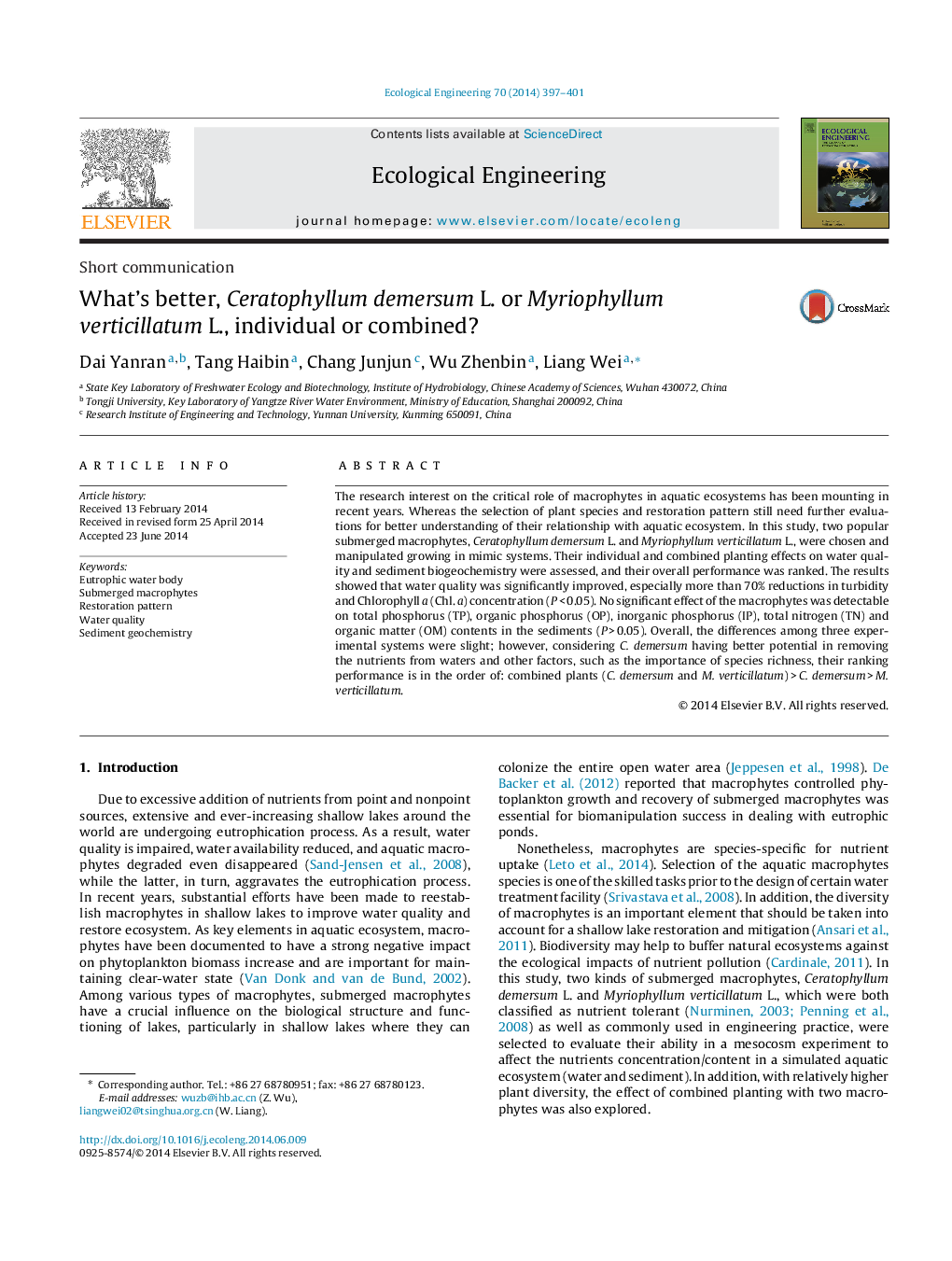| Article ID | Journal | Published Year | Pages | File Type |
|---|---|---|---|---|
| 6302205 | Ecological Engineering | 2014 | 5 Pages |
Abstract
The research interest on the critical role of macrophytes in aquatic ecosystems has been mounting in recent years. Whereas the selection of plant species and restoration pattern still need further evaluations for better understanding of their relationship with aquatic ecosystem. In this study, two popular submerged macrophytes, Ceratophyllum demersum L. and Myriophyllum verticillatum L., were chosen and manipulated growing in mimic systems. Their individual and combined planting effects on water quality and sediment biogeochemistry were assessed, and their overall performance was ranked. The results showed that water quality was significantly improved, especially more than 70% reductions in turbidity and Chlorophyll a (Chl. a) concentration (P < 0.05). No significant effect of the macrophytes was detectable on total phosphorus (TP), organic phosphorus (OP), inorganic phosphorus (IP), total nitrogen (TN) and organic matter (OM) contents in the sediments (P > 0.05). Overall, the differences among three experimental systems were slight; however, considering C. demersum having better potential in removing the nutrients from waters and other factors, such as the importance of species richness, their ranking performance is in the order of: combined plants (C. demersum and M. verticillatum) > C. demersum > M. verticillatum.
Related Topics
Life Sciences
Agricultural and Biological Sciences
Ecology, Evolution, Behavior and Systematics
Authors
Dai Yanran, Tang Haibin, Chang Junjun, Wu Zhenbin, Liang Wei,
